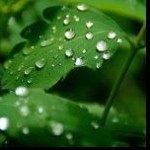How More Rain and Booming Forests May Mean Wildfires and Dry Aquifers
Posted: May 3, 2016Source: Mother Board

According to a study published Thursday in Scientific Reports courtesy of researchers from the US Forest Service, climate change has the potential to cut water supplies offered by USFS-administered forests by up to 7 percent by 2100. This is true even in the face of projected increases in overall precipitation during the same period.
The reason is somewhat counterintuitive. Simply, given future warming conditions and projected increases in precipitation, we can expect a large increase in overall ecosystem productivity—forests will thrive. By 2100, we can expect a 24 percent increase in total forest biomass. This has its upsides for sure—increased carbon sequestration, for one—but it also means that less water will wind up back in our aquifers. This is the result of evapotranspiration.
Evapotranspiration is roughly defined as the total water “loss” from both evaporation and plant transpiration. Evaporation is obvious enough—water vaporized from the surfaces of leaves, soil, and bodies of water—but transpiration is a bit less so. As it turns out, the vast majority of water that plants take up through their roots is unneeded. So, something like 97 to 99 percent of the water a plant removes from the soil is released via tiny pores on its leaves. This is more water that winds up evaporating away and less water that remains in the ground.
“The current study reveals that future climate change may alter the water partitioning pattern profoundly in [national forests] by enhancing [evapotranspiration] and depressing water yield, in spite of the general increasing trend of precipitation,” the USFS researchers note. “On the whole, median precipitation is projected to increase by [2 to 6 percent] under the future scenarios, resulting in an overall meteorological wetting condition in forested lands.”
The reason this overall wetting condition doesn’t yield actual wetting or useful (to humans) wetting is that it’s accompanied by high enough temperatures to increase evapotranspiration to the point that it “clearly offsets the increase in precipitation and in turn leads to a considerable decline in water yield,” the study explains.
More heat and more precipitation will lead to thriving, booming national forests. This will in turn lead to more leaf-space to capture and evaporate away that same sorely needed precipitation. Meanwhile, the water that does make it to the soil will find ever more water-demanding roots to shuttle it back upward into the Sun. The aquifers below will find decreasing replenishment as humans ask more and more of them.
Moreover, the study speculates that all of this may lead to accompanying increases in wildfires. More biomass means more fuel, and if less water is making it the forest floor and soil beneath, much of this biomass will also wind up drier and more prone to burning. Given all we know about climate change and wildfires, that’s not exactly comforting.
At the same time, it’s not completely hopeless. The USFS is in the business of managing forests, after all. “Active forest management practices such as thinning, selective cutting, and prescribed burning may be implemented to reduce fire risk and increase forest resilience to droughts and climate change,” the paper concludes.

